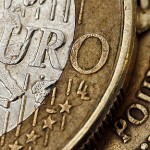After falling to three-month lows against the US dollar on July 9th, on July 10th the euro pulled back from those levels, but was still put under pressure, following the statement of a senior ECB official on Tuesday, regarding the banks monetary policy.
EUR/USD slid to a session low at 1.2769 at 2:00 GMT, after which consolidation followed at 1.2790. Support was likely to be received at July 9th low and a three-month low, 1.2754, while resistance was to be met at July 9th high, 1.2845.
“There are some dovish comments from ECB member Asmussen,” said Eric Viloria, senior currency strategist at Gain Capital Group LLC in New York, cited by Bloomberg.
The common currency took a steep drop on Tuesday after Joerg Asmussen said, that the ECB’s forward guidance, which is that interest rates will stay at low levels for an extended period, goes beyond 12 months. President Mario Draghi, in his statement last week after an ECB policy meeting, stressed that the bank’s monetary policy will remain accommodative for as long as needed to stimulate economic growth. Such loose policy could lead to further pressure on the euro, according to experts.
Another reason for the euro to extend losses against the US dollar on Tuesday was that ratings agency Standard & Poor’s cut Italy’s long-term credit rating to BBB, which is two levels above junk, from BBB+, because of the prospects of a further weakening growth in the country and difficulties, which domestic labor market confronts.
In addition, the International Monetary Fund diminished its forecast, regarding Euro zones GDP, stating economy will contract by 0.6% in 2013, a revision down from a 0.4% contraction, as projected in April. The IMF reduced its forecast, regarding global economic growth as well. It is expected global economy to add 3.1% during 2013, down from 3.3%, as projected in April. IMF based its decision on the weaker interior demand, slower rate of growth in some of the key developing economies worldwide and the prolonged recession in the Euro region.
Meanwhile, demand for the US dollar continued to be strong due to ongoing expectations of US Federal Reserve reducing scale of its Quantitative Easing later in the year and in hopes of better corporate profits during the second quarter. The dollar index rose on Tuesday, touching the highest point since the beginning of 2011, 85.00, but did not manage to exceed it.
The euro edged lower against the British pound, with EUR/GBP cross erasing 0.08% to reach 0.8589. Additionally, the euro decreased to eight-day lows against the Japanese yen, as EUR/JPY pair slid 0.51% to 128.62.





